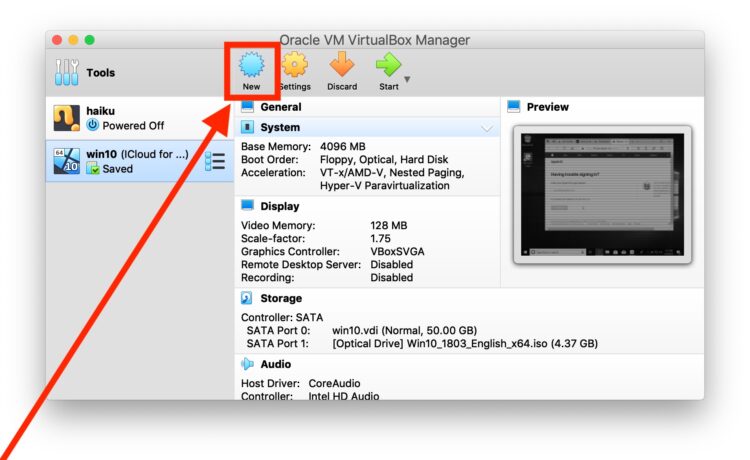
Display > Screen: Change video memory, monitor count, and scale factor. System > Processor: Change number of processors. System > Motherboard: Change base memory and boot order. General > Advanced: Shared Clipboard and Drag and Drop. You open the Settings of any virtual machine image in Virtualbox by right-clicking on it and selecting settings from the context menu. You need to increase or decrease video memory. You want to increase or decrease the memory of the virtual machine. You want to enable or disable clipboard sharing or drag and drop. The disk size of the virtual machine image is not large enough or is too large. You’ll be prompted to install the software. If you haven’t done this already, boot up the virtual machine, click the Devices menu, and select Install guest additions. If you manage to get Mac OS X running in a VirtualBox virtual machine or you’re using a niche operating system like Haiku, you won’t be able to use this feature.īefore using this feature, you must install the VirtualBox Guest Additions software package inside the guest virtual machine you want to do this with. Note that VirtualBox only allows you to use this feature with Windows, Linux, and Solaris guests. RELATED: 4+ Ways to Run Windows Software on Linux Using VirtualBox’s Seamless Mode You can seamlessly run Windows programs on your Linux desktop or run Linux software on a Windows one. These tricks work whether you’re using Windows, Linux, or Mac. The programs are still sandboxed so they won’t have access to your host operating system’s files - they just appear to be running on the host operating system. 
They’ll appear to be running as if they were running on your host operating system, but the virtual machine is still running in the background.

You start up your virtual machine, launch the programs you want to use, and then enable “Seamless Mode” or “Unity Mode.” The guest operating system’s desktop and the virtual machine window will vanish, leaving the guest operating system’s windows on your desktop.






 0 kommentar(er)
0 kommentar(er)
